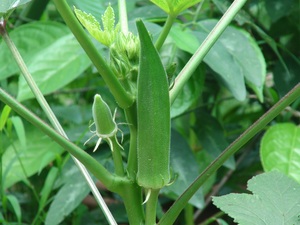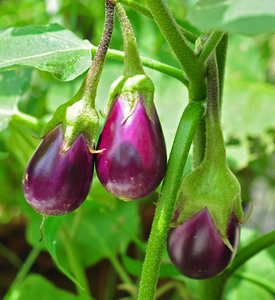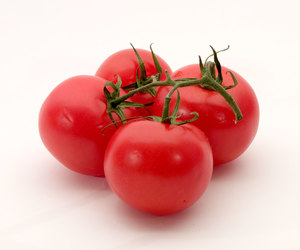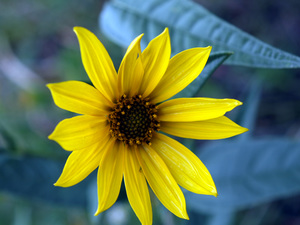Permaculture companion plants for Jalapeño Chili
| Image | Name | Data | Description | Actions |
|---|---|---|---|---|

|
Abelmoschus esculentus |
5-11
Full sun
Moist
Light (sandy), Medium, Heavy (clay)
1.0
1.7
Annual, Perennial
Herbs
true
Fruit, Leaves, Root, Seed
Oil, Coffee, Pectin
A-koto, angu, apala, asowntem, bakhua-mun, bamia, bandakka, bendi, bhindee, bhindi, binda, bindi, bondo, cantarela, derere rechipudzi, derere, dheras, dherosh, enmomi, fetri, gombaut, gombo, gumbo, guro, gusha, hakuyot, idelele, ikhievbo, ilasha, ilo, ka fei huang kui, kacang bendi, kaganh lender, kandia, kandjie, kopi arab, krachiap-mon, kubewa, lafeu, lieka, loka, maana, ma-lontho, mesta, muomi, miagorro, nathando, nkruma, obori, ochro, okworu, okwulu, otigo-iwoka, pahari bendi, pingpesi, poot barang, pui, quiabo, quimbambo, saluyot a bunga, sayur bendi, taku, uisul hme, vandakai, vandikkai, vendal, wayika, you-padi
Malvaceae
Bangladesh, India, Myanmar
Alabama, Albania, Andaman Is., Angola, Assam, Bahamas, Benin, Borneo, Bulgaria, Burkina, Cambodia, Cape Verde, Caroline Is., Cayman Is., Central African Repu, Chad, China South-Central, China Southeast, Comoros, Congo, Cuba, Dominican Republic, East Himalaya, Eritrea, Fiji, Florida, Gabon, Gambia, Georgia, Greece, Guinea-Bissau, Gulf of Guinea Is., Hainan, Haiti, Illinois, Ivory Coast, Jamaica, Jawa, Krym, KwaZulu-Natal, Laos, Leeward Is., Louisiana, Malaya, Mali, Marianas, Marshall Is., Maryland, Mauritania, Mexico Southwest, Mississippi, Mozambique, Nicobar Is., Niger, Nigeria, North Carolina, Northern Provinces, Oman, Pakistan, Peru, Philippines, Puerto Rico, Romania, Senegal, Sierra Leone, South Carolina, South European Russi, Southwest Caribbean, Sri Lanka, Sudan, Tanzania, Thailand, Togo, Uganda, Ukraine, Venezuela, Venezuelan Antilles, Vietnam, Virginia, Windward Is., Zambia, Zaïre, Zimbabwe
https://en.wikipedia.org/wiki/Okra
https://pfaf.org/User/Plant.aspx?LatinName=Abelmoschus esculentus
https://powo.science.kew.org/taxon/urn:lsid:ipni.org:names:558006-1
Weed potential
Fiber, oil, textiles, Pectin
|
Show
Edit |
|

|
Solanum melongena |
8-11
Full sun
Moist
Light (sandy), Medium, Heavy (clay)
1.0
1
Perennial
true
Fruit, Leaves
Eggplant
Aubergine
Solanaceae
China South-Central, Laos, Malaya, Myanmar, Thailand, Vietnam
Assam, Bangladesh, Cambodia, East Himalaya, India, Kazakhstan, Laccadive Is., Sri Lanka, Tadzhikistan, Turkmenistan, Uzbekistan, Zaïre
https://en.wikipedia.org/wiki/Eggplant
https://pfaf.org/User/Plant.aspx?LatinName=Solanum melongena
https://powo.science.kew.org/taxon/urn:lsid:ipni.org:names:820053-1
|
The eggplant, also known as Solanum melongena, is a plant that is native to India and Southeast Asia. It is typically an annual plant. It is a member of the nightshade family and is closely related to other vegetables such as tomatoes and peppers. Eggplants are typically recognized by their deep purple, spongy fruit, but they can come in a variety of sizes and colors (white, green, black, purple striped). The fruit is elongated and cylindrical in shape, and can grow to be anywhere from 6-12 inches in length. The leaves of the eggplant are broad and dark green in color, and the plant itself can grow to be quite tall, reaching heights of 3-4 feet. Eggplants prefer warm, sunny growing conditions and can be grown in a wide range of soils as long as they are well-draining. They are typically grown as a summer crop, and will begin to produce fruit around 2-3 months after planting. To cultivate eggplants successfully, a grower will need to provide the plants with adequate water and nutrients, and may need to use stakes or other supports to help the plant grow upright. Eggplants are not winter hardy and will not survive freezing temperatures. The fruit of the eggplant is edible and is often used in a variety of dishes, particularly in Mediterranean and Asian cuisines. It can be sliced and fried, grilled, or used in stews and soups. The skin of the fruit is typically removed before eating, and the flesh can be stored in the refrigerator for a few days after harvesting. In addition to being used as a food source, eggplants have also been used for medicinal purposes in some cultures. The plant is believed to have anti-inflammatory properties, and has been used to treat a variety of ailments including headache and rheumatism. It is also sometimes used as a natural insect repellent. |
Show
Edit |

|
Allium cepa |
3-9
Annual
Full sun
Moist
Light (sandy), Medium
0.6
Herbs
Flowers, Leaves, Root, Seed
Seed - direct sow, Seed - transplant
https://en.wikipedia.org/wiki/Onion
Garden onion
Alliaceae
Zwiebel
https://pfaf.org/User/Plant.aspx?LatinName=Allium cepa
50°f, 10°c
Seed indoors 6 weeks before transplanting in the garden
2-6 inches
6.0-7.0
Allium
Turkmenistan
Algeria, Argentina Northeast, Arkansas, Baltic States, Bangladesh, Belarus, Bulgaria, California, Cambodia, Canary Is., Central European Rus, China North-Central, China South-Central, China Southeast, Colombia, Cuba, Czechoslovakia, Dominican Republic, East Aegean Is., East European Russia, East Himalaya, Ecuador, Egypt, Ethiopia, Fiji, France, Galápagos, Guinea-Bissau, Haiti, Illinois, India, Iraq, Italy, Jamaica, Kansas, Kentucky, Kirgizstan, Korea, Krym, Libya, Louisiana, Madeira, Manchuria, Mauritania, Mexico Central, Mexico Gulf, Mexico Northeast, Mexico Southeast, Mexico Southwest, Minnesota, Montana, Morocco, New York, Niue, North European Russi, Northwest European R, Oregon, Pakistan, Puerto Rico, Seychelles, South European Russi, Spain, Tadzhikistan, Texas, Thailand, Tibet, Tonga, Trinidad-Tobago, Ukraine, Uzbekistan, Vermont, Washington, West Himalaya, West Siberia, Wisconsin, Xinjiang, Yugoslavia
Spring or fall
0.3
https://powo.science.kew.org/taxon/urn:lsid:ipni.org:names:527795-1
Cosmetic, Dye, Hair, Polish, Rust
true
|
Onion (Allium cepa) is a plant species in the family Amaryllidaceae. It is native to central Asia and is commonly grown as a vegetable in many parts of the world. Onions are biennial plants, meaning they typically have a two-year life cycle. In the first year, the onion forms a small, rounded bulb with thin, papery skin. In the second year, the onion will produce a tall stem with hollow, elongated leaves and a small, spherical flower head. Onions are typically grown for their bulbs, which are used as a food ingredient in many dishes. The bulbs can vary in size and shape, depending on the variety, but are generally spherical or oblong in shape and range in size from about 2-4 inches in diameter. Onions are commonly differentiated by their color, which can range from white to yellow to red. Onions prefer well-drained soil that is rich in organic matter. They should be planted in a sunny location and will benefit from regular watering, especially during dry periods. Onion bulbs can be harvested when they reach the desired size, typically after about 100-150 days of growth. To store onions, they should be dried and cured in a cool, dry place for about two weeks before being placed in a mesh bag or other breathable container. Onions are edible and are commonly used as a food ingredient in many dishes. The bulbs are the most commonly used part of the plant, but the leaves and stems can also be used in cooking. Onions have a pungent, spicy flavor and are often used to add flavor to soups, stews, and other dishes. Onions can be stored for several months if properly dried and cured. In addition to their use as a food ingredient, onions have also been used for their medicinal properties. They have been used to treat a variety of ailments, including coughs, colds, and respiratory infections. Onions are also sometimes used as a natural fertilizer, due to the high levels of sulfur and other nutrients they contain. Onions are not known to provide significant value to wildlife. They are not a preferred food source for most animals and do not provide any significant habitat value. However, some insects, such as the onion maggot, can be pests of onion crops. |
Show
Edit |

|
Tomato |
10-12
Annual, Perennial
Full sun
Moist
Light (sandy), Medium, Heavy (clay)
2.0
True
Fruit, Seed
https://en.wikipedia.org/wiki/Tomato
Fast
Garden tomato, Dumádu, Garden tomato, Love apple, Lycopersicum esculentum, Tomate, Tomato, Tomato extract containing lycopene, Tomato|thakkali, Tumatis, Lycopersicon esculentum
Solanaceae
Tomate
Oil
https://pfaf.org/User/Plant.aspx?LatinName=Solanum lycopersicum, https://pfaf.org/User/Plant.aspx?LatinName=Lycopersicon esculentum
Start seeds indoors 5-6 weeks before last frost
In containers or in rows in beds around last frost date
6.2-6.8
70-80°f
Peru
Alabama, Alaska, Andaman Is., Angola, Arizona, Arkansas, Assam, Austria, Azores, Bahamas, Bangladesh, Belarus, Benin, Bolivia, British Columbia, Bulgaria, Burkina, California, Cambodia, Cameroon, Canary Is., Cape Verde, Caroline Is., Central African Repu, Chagos Archipelago, Chatham Is., Christmas I., Colombia, Comoros, Connecticut, Cook Is., Costa Rica, Cuba, Cyprus, Czechoslovakia, Delaware, Dominican Republic, East Aegean Is., East European Russia, East Himalaya, Ecuador, Fiji, Florida, Galápagos, Georgia, Gilbert Is., Gulf of Guinea Is., Haiti, Hawaii, Illinois, India, Indiana, Iowa, Ivory Coast, Jawa, Kansas, Kazakhstan, Kentucky, Korea, Laccadive Is., Laos, Leeward Is., Line Is., Louisiana, Madagascar, Madeira, Maine, Malawi, Mali, Marianas, Marquesas, Marshall Is., Maryland, Massachusetts, Mauritania, Mauritius, Michigan, Mississippi, Missouri, Montana, Mozambique, Myanmar, Namibia, Nansei-shoto, Nauru, Nebraska, Nepal, Nevada, New Brunswick, New Caledonia, New Hampshire, New York, New Zealand North, Nicaragua, Nicobar Is., Niue, North Carolina, North Dakota, Nova Scotia, Ogasawara-shoto, Ohio, Ontario, Oregon, Pakistan, Panamá, Pennsylvania, Philippines, Pitcairn Is., Puerto Rico, Québec, Rhode I., Réunion, Saskatchewan, Selvagens, Society Is., South Carolina, South European Russi, Tadzhikistan, Taiwan, Tennessee, Texas, Trinidad-Tobago, Tuamotu, Tubuai Is., Turkey, Turkmenistan, Tuvalu, Utah, Uzbekistan, Venezuela, Vermont, Vietnam, Virginia, Wake I., Wisconsin, Zambia, Zaïre, Zimbabwe
1.00
https://powo.science.kew.org/taxon/urn:lsid:ipni.org:names:316947-2
|
The tomato is a flowering plant native to South America. It is a member of the nightshade family and closely related to the potato. The tomato plant typically grows to a height of 1-3 meters and has a weak, hairy stem. The leaves are arranged alternately on the stem and are typically dark green in color. The plant produces small yellow or white flowers, which develop into the fruit we know as tomatoes. The fruit itself is typically red, but can also be yellow, orange, green, or purple. Indeterminate tomato plants are perennials in their native habitat, but are cultivated as annuals. Determinate, or bush, plants are annuals that stop growing at a certain height and produce a crop all at once. Tomatoes prefer warm, sunny growing conditions and well-drained, humus-rich soil. They can be grown in a variety of soil types, but perform best in soil with a pH between 6 and 6.8. In order to cultivate tomatoes successfully, growers may need to provide support for the plant (such as a stake or cage) to prevent the fruit from weighing down the stem, and may also need to water and fertilize the plant regularly. Tomatoes are generally considered to be frost-sensitive, so in areas with cold winters they may need to be grown in a greenhouse or indoors. There are a great number of cultivars. The edible parts of the tomato plant are the fruit and the leaves. The fruit can be eaten raw or cooked, and is commonly used in a variety of dishes, such as salads, sandwiches, and pasta. The leaves, although not commonly eaten, are also edible and have a slightly bitter taste. After harvest, tomatoes can be stored at room temperature, in a cool place, or in the refrigerator. |
Show
Edit |

|
Maximilian Sunflower |
4-10
Full sun
Moist
Light (sandy), Medium, Heavy (clay)
2.4
1.3
Perennial
Medium
true
Root
Maximillian daisy
Asteraceae or compositae
Alabama, Alberta, Arkansas, British Columbia, California, Colorado, Connecticut, Delaware, District of Columbia, Idaho, Illinois, Indiana, Iowa, Kansas, Kentucky, Maine, Manitoba, Maryland, Massachusetts, Mexico Northeast, Michigan, Minnesota, Mississippi, Missouri, Nebraska, New Jersey, New York, North Carolina, North Dakota, Ohio, Oklahoma, Ontario, Pennsylvania, Québec, Saskatchewan, South Carolina, South Dakota, Tennessee, Texas, Utah, Virginia, Washington, West Virginia, Wisconsin, Wyoming
https://en.wikipedia.org/wiki/Helianthus_maximiliani
https://powo.science.kew.org/taxon/urn:lsid:ipni.org:names:329260-2
|
#### Links [Maximilian Sunflower @ Plants For A Future](https://pfaf.org/user/Plant.aspx?LatinName=Helianthus maximilianii) |
Show
Edit |

|
Common Sunflower |
https://en.wikipedia.org/wiki/Helianthus_annuus
true
Fast
Dry, Moist
Full sun, Partial sun/shade
6-9
Common sunflower
Light (sandy), Medium, Heavy (clay)
Asteraceae or compositae
3.0
Flowers, Seed, Stem
Oil, Coffee
Weed potential
Annual
https://pfaf.org/User/Plant.aspx?LatinName=Helianthus annuus
Arizona, California, Mexico Central, Mexico Northeast, Mexico Northwest, Mexico Southwest, Nevada
Alabama, Alaska, Albania, Alberta, Altay, Amur, Argentina Northeast, Argentina Northwest, Argentina South, Arkansas, Assam, Austria, Azores, Baltic States, Bangladesh, Belarus, Belgium, Belize, Bolivia, Botswana, British Columbia, Bulgaria, Buryatiya, Cape Provinces, Caprivi Strip, Central European Rus, Chile Central, Chile North, Chile South, China North-Central, China South-Central, China Southeast, Chita, Colombia, Colorado, Connecticut, Corse, Costa Rica, Delaware, Denmark, District of Columbia, Dominican Republic, East European Russia, East Himalaya, El Salvador, Finland, Florida, France, Free State, Georgia, Germany, Great Britain, Greece, Guatemala, Hainan, Haiti, Honduras, Hungary, Idaho, Illinois, India, Indiana, Inner Mongolia, Iowa, Ireland, Irkutsk, Italy, Japan, Kamchatka, Kansas, Kazakhstan, Kentucky, Khabarovsk, Kirgizstan, Korea, Krasnoyarsk, KwaZulu-Natal, Lesotho, Libya, Louisiana, Magadan, Maine, Manchuria, Manitoba, Maryland, Massachusetts, Mexico Gulf, Mexico Southeast, Michigan, Minnesota, Mississippi, Missouri, Montana, Morocco, Namibia, Nebraska, Nepal, Netherlands, New Brunswick, New Hampshire, New Jersey, New Mexico, New South Wales, New York, New Zealand North, New Zealand South, Newfoundland, North Carolina, North Caucasus, North Dakota, North European Russi, Northern Provinces, Northern Territory, Northwest Territorie, Norway, Nova Scotia, Nunavut, Ohio, Oklahoma, Ontario, Oregon, Pakistan, Palestine, Paraguay, Pennsylvania, Peru, Poland, Primorye, Prince Edward I., Qinghai, Queensland, Québec, Rhode I., Romania, Sakhalin, Sardegna, Saskatchewan, Sicilia, South Australia, South Carolina, South Dakota, South European Russi, Spain, Swaziland, Sweden, Switzerland, Tadzhikistan, Tasmania, Tennessee, Texas, Thailand, Tibet, Transcaucasus, Turkey, Turkey-in-Europe, Turkmenistan, Tuva, Ukraine, Uruguay, Utah, Uzbekistan, Vermont, Victoria, Virginia, Washington, West Himalaya, West Siberia, West Virginia, Western Australia, Wisconsin, Wyoming, Xinjiang, Yakutskiya, Yugoslavia
https://powo.science.kew.org/taxon/urn:lsid:ipni.org:names:119003-2
Blotting paper, Dye, Fiber, Fire starter, Cover crop, Herbicide, Microscope, oil, textiles, Dynamic accumulator
|
Show
Edit |